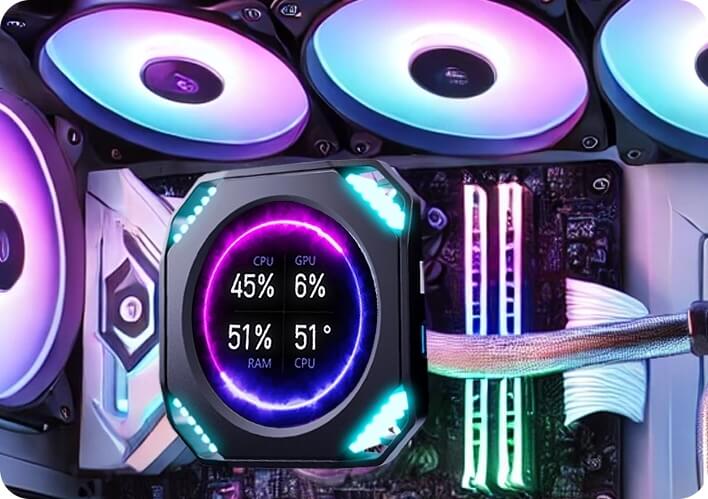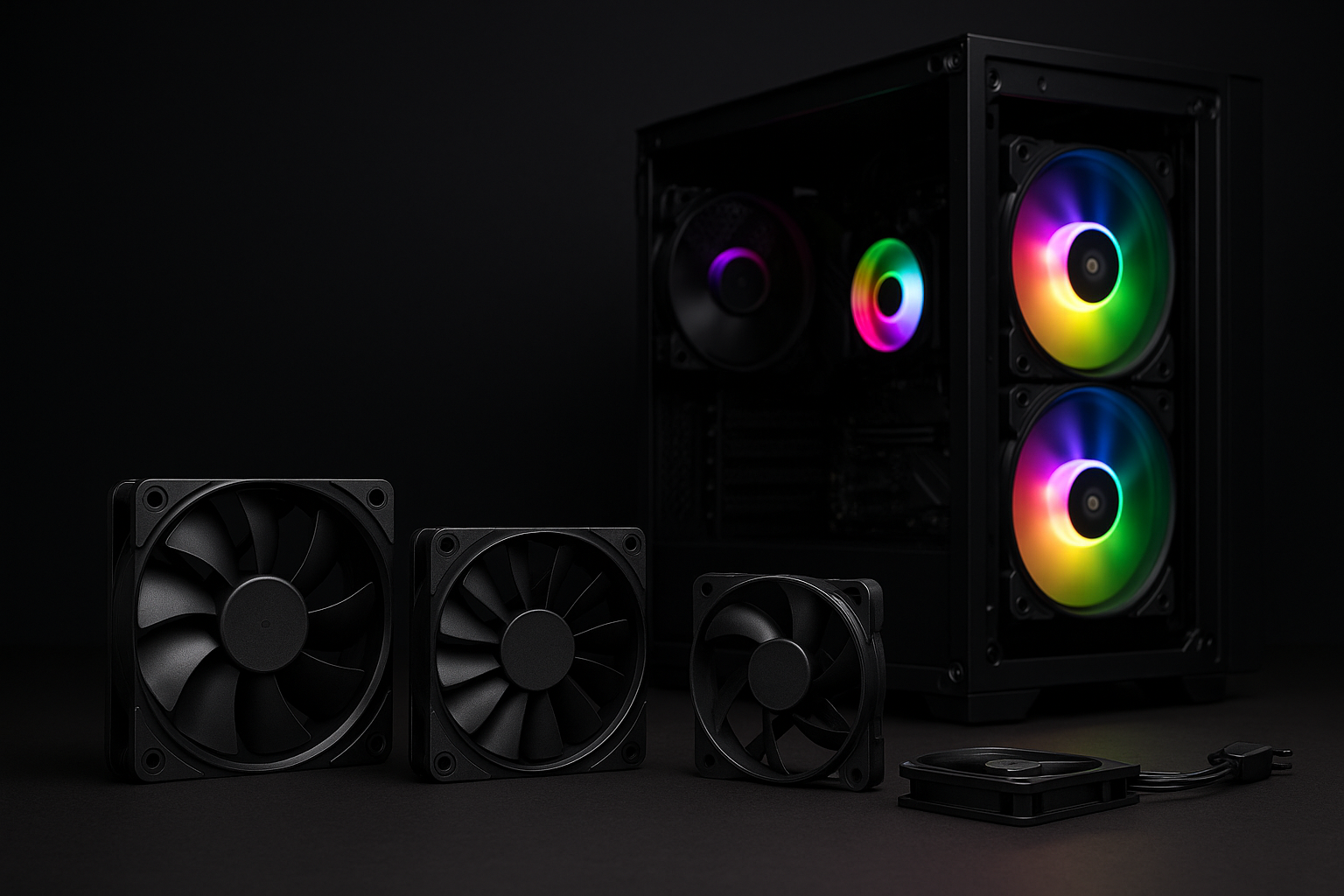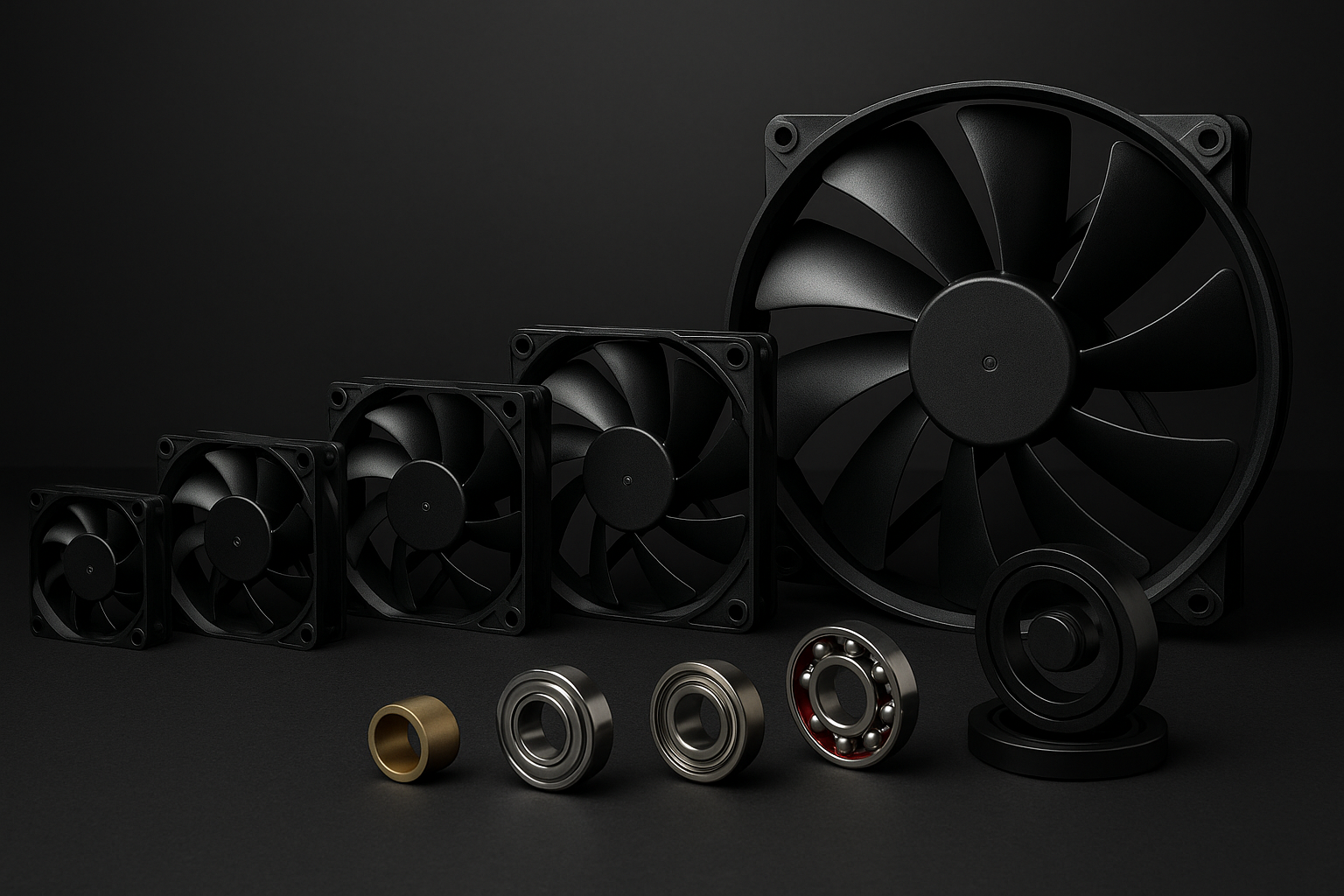- Blog
Lighting Control & Connector Compatibility | Q&A

Table of Contents
ToggleWhat’s the difference between PWM (4-pin) and DC (3-pin) control?
-
PWM (4-pin): The fan receives a constant 12 V, and speed is controlled by a pulse-width signal on pin 4. This enables stable low RPM and, on many models, 0 RPM stop.
-
DC (3-pin): Speed is controlled by lowering the voltage. Most fans need about 5–6 V to start spinning, so ultra-low speeds are harder to maintain smoothly.
-
Recommendation: If your motherboard supports PWM, use 4-pin PWM fans for a wider, more precise control range.
-
Compatibility note: A 3-pin fan can plug into a 4-pin header and will run, but it will be DC-controlled (no PWM function).
How do ARGB (3-pin 5 V) and RGB (4-pin 12 V) differ?
-
ARGB (Addressable RGB): 3-pin, 5 V. Each LED can be controlled individually for effects like waves and rainbows. Headers are typically labeled “5V/DATA/GND,” “ADD_HEADER,” or “ARGB.”
-
RGB (non-addressable): 4-pin, 12 V. All LEDs show the same color at the same time. Headers are labeled “12V/G/R/B”.
-
Do NOT mix: The plugs are keyed differently and not cross-compatible. Never connect a 5 V ARGB device to a 12 V RGB header (or vice versa)—you can permanently damage the LEDs.
-
No matching header? Use a brand controller or a proper converter. Many ARGB fans include a controller for boards without a 5 V header.
Can I plug a 3-pin ARGB device into a 4-pin RGB header (or the reverse)?
-
No. Different voltages, pinouts, and signaling. Only connect 3-pin ARGB → 5 V ARGB headers and 4-pin RGB → 12 V RGB headers. Always align the arrow/triangle on the plug with the 5 V (ARGB) or 12 V (RGB) marking on the header.
How many fans can a single motherboard fan header handle?
-
Most headers are rated around 1.0 A at 12 V (some boards offer 2.0 A). Check your manual.
-
Typical 120/140 mm fans draw 0.10–0.30 A each at full speed. Two or three on a simple Y-splitter is common if the total current stays below the header limit.
-
For many fans or high-draw models, use a powered PWM hub.
What’s the difference between a splitter cable and a powered hub?
-
Splitter cable: Duplicates the PWM signal and shares the header’s power across multiple fans. Safe only if the sum of fan currents stays under the header’s rating.
-
Powered hub (with SATA power): Provides 12 V power directly from the PSU, while the motherboard header supplies just the PWM/ tach signal. This offloads power from the motherboard and is the right choice for 4–8 fans (or more), depending on the hub.
How many devices can a single ARGB/RGB header power?
-
Motherboard ARGB (5 V) and RGB (12 V) headers are usually limited by current (often 2–3 A total, varies by board). Exceeding this may cause flicker, desync, or damage.
-
Large builds should use a brand ARGB/RGB controller or hub with SATA power. Follow the controller’s per-port and total current limits.
How do I wire multiple ARGB fans safely and cleanly?
-
Choose a controller/hub that matches your fans (3-pin ARGB 5 V or 4-pin RGB 12 V).
-
Power the hub with SATA from the PSU.
-
Connect the hub’s data lead to the correct motherboard header (ARGB or RGB).
-
Daisy-chain only within the limits stated by the fan/hub manufacturer (max devices per port, max cable length).
-
Keep one device providing tach feedback on fan hubs (most hubs label the “RPM” port).
Any quick do’s and don’ts?
-
DO verify header type and voltage before plugging anything in.
-
DO add up fan current when using splitters; prefer powered hubs for many fans.
-
DO use motherboard software (Aura/Mystic Light/Polychrome/RGB Fusion, etc.) or the brand’s controller app for sync.
-
DON’T cross-connect 5 V ARGB with 12 V RGB.
-
DON’T exceed header or hub current limits.
-
DON’T force connectors—if it doesn’t fit, it’s probably the wrong header.




